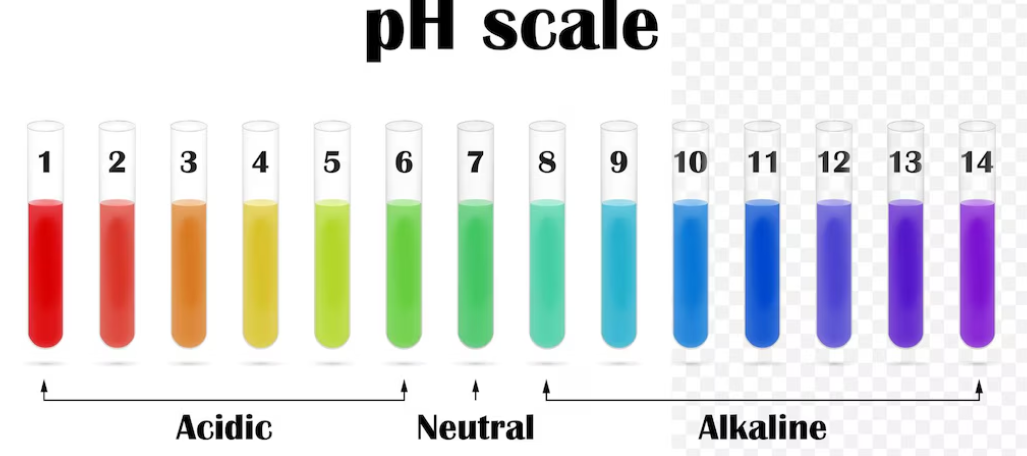There is not much we can do that is more profound to guarantee our good health than to maintain good pH balance and to understand how to interpret our findings. Blood pH has to be near 7.3 at all times, which is slightly alkaline. Many misunderstand this and think urine and saliva should match the blood. However, this is untrue. So let’s look at some ways to test.
1. Test your saliva when you wake up in the morning, before anything goes into your mouth. Stimulate your saliva production (glands below the tongue) by ‘sucking and swallowing’ several times first. Touch the pH test strip in the saliva being careful not to touch the teeth/tongue. Compare color and write down the pH. Do this before drinking, eating or brushing teeth (smoking too).
2. Test your second urine of the morning. The urine stored overnight will be acid, so don’t test that. Drain your bladder in the morning (or the last time during the night if you do that). Then test the second urine and record the pH. This will be the pH of your urine after you eliminated the ‘acid load’ from the day prior. Since the acids should be gone, the urine pH ideally will be 6.4.
3. Eat breakfast (an apple, or anything). After 20 minutes. check your saliva again and record the reading. This should go up from what it was before eating, even a tiny bit.
4. Healthy pH, according to Dr. Carey Reams, is 6.4 for saliva and urine, two hours after eating.

THE LEMON TEST – an important test to evaluate the state of your alkaline reserves
pH ranges vary depending upon the body fluid being measured. Therefore, the ideal pH range for the Urine Test, which uses your urine as the base, is different from the ideal pH range for Lemon Test, which reads from your saliva. When checking your pH, please be sure reference the range that corresponds with the type of test you are using.
Note: No food or juice should be taken for 2 hours before beginning the pH test.
Squeeze the juice of ½ of a lemon into 2 ounces of distilled water. No sweeteners! Take all the juice at once, swish in your mouth and swallow. Wait for 2 minutes, and then begin a series of 6 saliva pH readings. Wait 60 seconds between each reading. Record each reading. At least one of the last 3 readings must show a passing result in order to
qualify for good alkalinity.
8.0 or Above:
You passed! This indicates that your liver has adequate electrolyte reserves available.
7.5 – 7.9:
You barely passed but should boost your electrolyte levels to be entirely healthy
7.0 – 7.4:
Indicates that you have some reserve of electrolyte minerals, but not as much as is needed. Work on increasing your electrolyte reserves.
6.9 or Below:
Indicates a possible serious condition. Electrolyte reserves are very low and both the liver
and digestion are affected. Additional support from your healthcare practitioner is advised.
This test originated with ARISE and SHINE, a wonderful book on cleansing. Dr. Anderson discovered that people who have inadequate alkaline reserves do not need to cleanse until they can restore their health. Sometimes we have to move forward with cleansing because of a health crisis, but knowing where your fluid pH stands is very important information before you begin.
